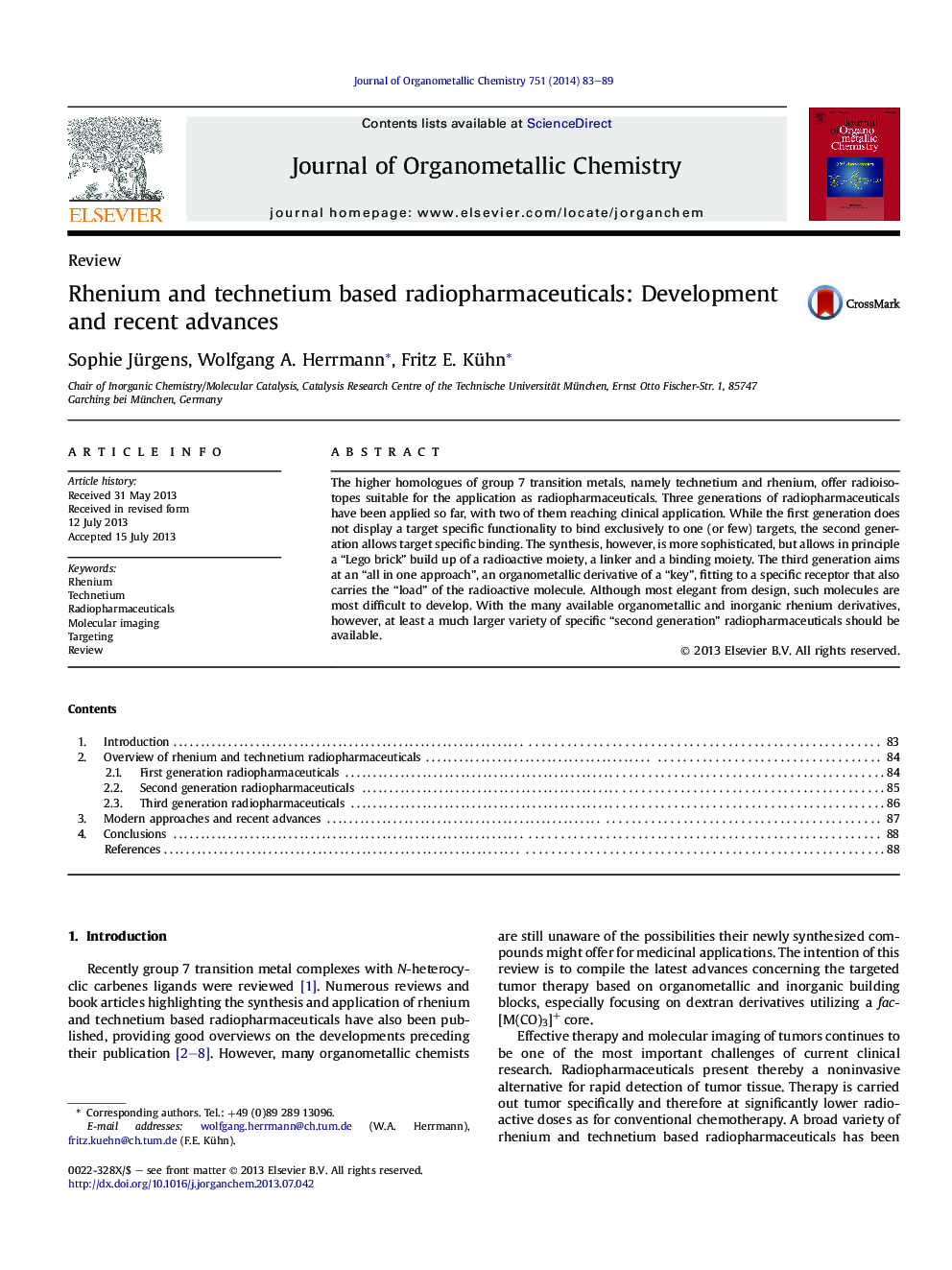| Article ID | Journal | Published Year | Pages | File Type |
|---|---|---|---|---|
| 1324267 | Journal of Organometallic Chemistry | 2014 | 7 Pages |
•The development of rhenium and technetium based radiopharmaceuticals is outlined.•The state of the art of medicinal applications is exemplarily discussed.•Recent organometallic and inorganic building blocks are highlighted.•Special focus is set on dextran derivatives utilizing a fac-[M(CO)3]+ core.
The higher homologues of group 7 transition metals, namely technetium and rhenium, offer radioisotopes suitable for the application as radiopharmaceuticals. Three generations of radiopharmaceuticals have been applied so far, with two of them reaching clinical application. While the first generation does not display a target specific functionality to bind exclusively to one (or few) targets, the second generation allows target specific binding. The synthesis, however, is more sophisticated, but allows in principle a “Lego brick” build up of a radioactive moiety, a linker and a binding moiety. The third generation aims at an “all in one approach”, an organometallic derivative of a “key”, fitting to a specific receptor that also carries the “load” of the radioactive molecule. Although most elegant from design, such molecules are most difficult to develop. With the many available organometallic and inorganic rhenium derivatives, however, at least a much larger variety of specific “second generation” radiopharmaceuticals should be available.
Graphical abstractThe use of rhenium and technetium based radiopharmaceuticals is reviewed, highlighting first, second and third generation radiopharmaceuticals. Special focus is set on recent advances in targeted tumor therapy.Figure optionsDownload full-size imageDownload as PowerPoint slide
